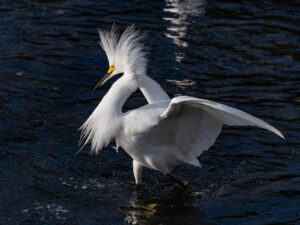Beaches, Plains, Mountains Temp Tourists
Located south of the equator, Tanzania is the largest country in East Africa. It sits on the Indian Ocean and borders eight countries: Burundi, Democratic Republic of Congo, Kenya, Malawi, Mozambique, Rwanda, Uganda, and Zambia.
The geography is incredibly diverse, with beaches along turquoise waters, stretches of grasslands and plains, acres of national parks, and the highest single free-standing mountain and second deepest lake in the world. Here are just some of the geographic highlights.
Mount Kilimanjaro
The highest mountain in Africa and the highest single free-standing mountain in the world (at 19,340 feet above sea level), Mount Kilimanjaro is a dormant volcano. It is the fourth most topographically prominent peak on Earth and a major climber destination. Continuously snow-capped, climate change has had an impact on this mountain. Shrinking glaciers and ice fields have become the subject of many scientific studies as experts predict they may disappear between 2025 and 2035.
Lake Tanganyika
This is the second-oldest freshwater lake in the world, holding 16% of the world’s freshwater. It is also the second-largest by volume and the second-deepest in the world, with a maximum depth of 4,826 feet. Waters drain into the Congo River system and ultimately make their way to the Atlantic Ocean. It is home to more than 250 species of fish, including a freshwater jellyfish and incredibly colorful but rare cichlids. Various land animals visit 1,136 miles of shoreline, including primates, hippos, and crocodiles.
Ngorongoro Crater
The largest intact volcanic caldera in the world is more than three million years old. It is estimated to be 2,000 feet deep, with a floor covering 100 square miles. Ngorongoro Crater is where thousands of wild animals, including the “Big 5” (lion, leopard, elephant, black rhinoceros, and African buffalo), visit thanks to a permanent water supply and abundant vegetation.
Serengeti National Park
There are more than 99 National Parks in Africa. While Serengeti National Park is only the ninth-largest, it is one of the best known and home to the largest lion population in Africa and the location of the largest annual animal migration in the world with more than 1.5 million blue wildebeest and 250,000 zebra.
Established in 1951, it covers 5,700 square miles and has some of the best grasslands and an extensive acacia woodland savanna. It’s a great place to catch “big cat” action, but visitors should also look to the skies because this park is inhabited by more than 500 bird species.
Explore Tanzania
While Tanzania has been photographed and featured in numerous films, there are some sights that you absolutely must see in person. Make plans to experience the diverse geography of Tanzania with Wanderful Tanzania. Find an upcoming safari and book this once-in-a-lifetime travel experience today.



